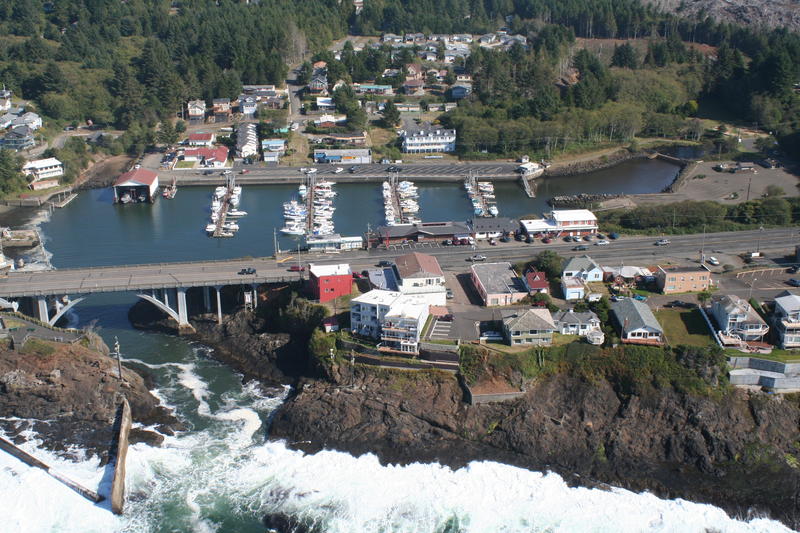
Officials Worry ‘World’s Smallest Harbor’ In Depoe Bay Could Shrivel Unless Dredged
Listen
If you’ve traveled the central Oregon coast, you might remember the signs marking Depoe Bay’s claim to fame: the “World’s Smallest Harbor.” But now that harbor is getting even smaller because of accumulating silt.
City officials in Depoe Bay are on tenterhooks because of the problem. Silt buildup renders the fuel dock inaccessible at low tide. And launching a boat that draws more than two feet of water is becoming difficult at low tide, too.
Now officials are waiting to hear if the U.S. Army Corp of Engineers will dredge the six acre harbor next season so that the local charter fishing and whale watching economy can survive.
The harbor urgently needs dredging so recreational fishers can launch and fuel up reliably, said Mayor Barbara Leff.
“If the timing of the tides isn’t exactly right and they can’t get in the water and the silt is a problem, they’re going to miss out on fishing,” Leff said. “If they miss out on fishing that is lost income to the harbor, to the restaurants and very probably to an inn up there too.”
One of the reasons city officials express a high level of urgency is that recent clear-cut logging in the hills behind the harbor is likely sending more silt down creeks toward the harbor than usual.
“We’re really, really trying to push this as an emergency,” said Brady Weidner, city superintendent. “We don’t want a world’s smallest beach. That would be a travesty.”
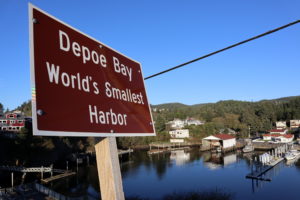
The World’s Smallest Navigable Harbor is six acres in size.
CREDIT: TOM BANSE / N3
A fact sheet carried to Washington, D.C., by a two-member delegation from the city last month characterized the harbor as “paramount to the community’s economic vitality and for ensuring public safety.”
Depoe Bay is home to a large charter fishing fleet. It’s also become a popular port for whale watching tours. However, the harbor does not record much in the way of commercial fish landings, nor does it handle maritime cargo, which are primary metrics the federal government weighs when allocating harbor maintenance funds.
The Army Corps of Engineers said Depoe Bay is competing for a limited pool of funding with almost 900 other small or low-use harbors around the country. The Corps’ 2019 work plan is now being finalized at headquarters.
“We’re hoping to know if Depoe Bay competed successfully by the end of November,” said Corps of Engineers spokeswoman Kate Groth by phone from Coos Bay. “There’s a lot of competition.”
The last time the port was dredged was in 2014. The Corps of Engineers had the harbor on an every-five-years dredging cycle, which would mean its turn would normally come in 2019.
The city of Depoe Bay has a small tax base and population — around 1,500 residents. The funding request to the Corps of Engineers for harbor dredging totals $878,000.
A Coast Guard lifesaving station on the harbor is well-positioned so its motor lifeboats can get out on any tide. But the senior officer for Coast Guard Station Depoe Bay nevertheless wrote a letter of support last month in favor of dredging.
Officer in Charge C.R. Hinote said while the Coast Guard station has its own fuel tank, it would like to have unhindered access to the city fuel dock for emergency occasions.
“Due to the current state of depth of water at low tide in Depoe Bay Harbor, the Coast Guard cannot safely utilize this fuel pier,” Hinote wrote.
Related Stories:
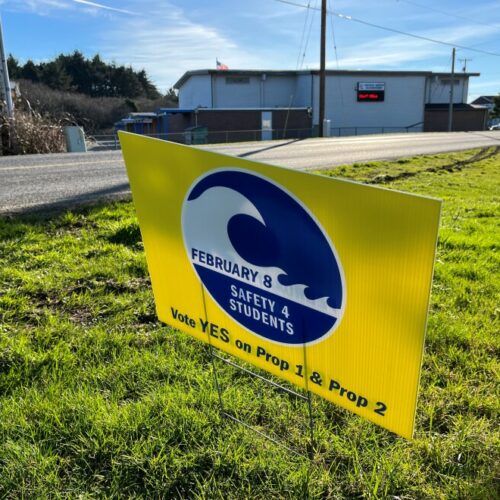
Earthquake Safety Of Schools On Ballot On Washington Coast Feb. 8, Possibly Statewide In November
The January 15 volcanic eruption near Tonga was a stark reminder of the threats posed by tsunamis. That’s long been a concern in the Pacific Northwest, where thousands of students go to school within reach of a large tsunami.
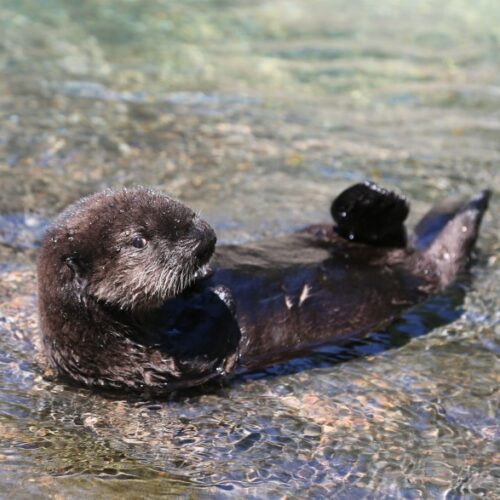
Skeptics Of Sea Otter Reintroduction Getting Organized On Pacific Coast
Sea otters are undeniably cute, but cuteness only goes so far when major economic interests are at stake. That’s an inference you can make from the emergence of organized pushback to the possible reintroduction of sea otters along the Oregon Coast.
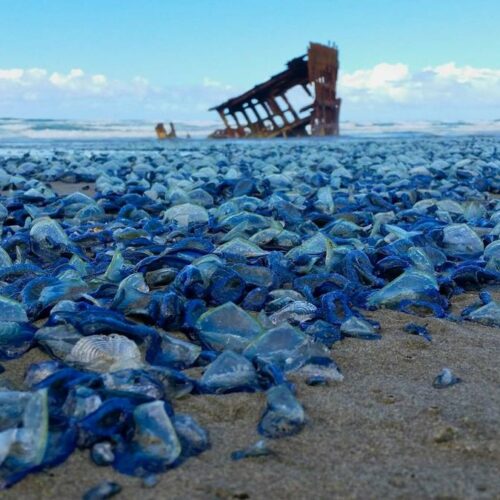
‘Blue Tides’ Of Sailor Jellies On Northwest Coast Correlate With Warmer Seas In Winter
New research out of the University of Washington finds a correlation between warmer ocean waters and mass strandings of By-the-wind sailor jellyfish over the past two decades. The brief, widespread beachings of “gazillions” of purplish-blue jellies along the Pacific Northwest coast create a memorable sight for those who chance to be in the right place at the right time.















